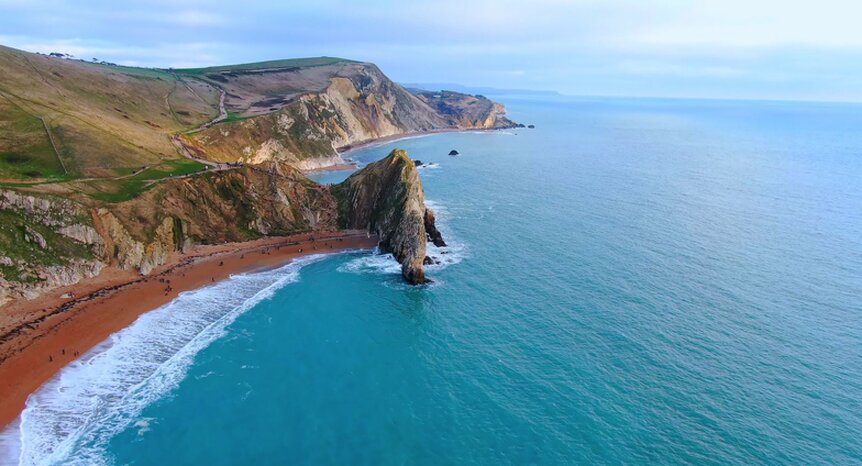Create a free profile to get unlimited access to exclusive videos, sweepstakes, and more!
Rare predatory squid attack discovered in 200-million-year-old British fossil

Sometimes you eat the prehistoric squid, and sometimes it eats you!
In a rare find first unearthed on the Jurassic coast of southern England way back the 19th century, paleontologists have identified the world's oldest known squid-like animal with its prey still lodged in its mouth. This intriguing fossilized specimen has been sheltered inside the collections of the British Geological Survey in Nottingham, U.K., and date back nearly 200 million years to the beginning of the Jurassic period.
In a fresh inspection of the 23-inch, centuries-old fossil, researchers report that it appears to reveal a creature — which they have now correctly identified as Clarkeiteuthis montefiorei — with a herring-type fish (Dorsetichthys bechei) stuck in its jaws. They date the discovery back to the Sinemurian age (190-199 million years ago), a time stamp which would predate all similarly recorded samples by over 10 million years.
A close-up image below shows the damaged head/body of the Dorsetichthys bechei (right) with the arms of the Clarkeiteuthis montefiorei (left) locked around it.
The research project was headed up by the University of Plymouth, in partnership with the University of Kansas and Dorset-based company, The Forge Fossils. Its extraordinary findings have been accepted for publication in Proceedings of the Geologists’ Association and will also be shared a scheduled component of Sharing Geoscience Online, a virtual version of the traditional General Assembly held each year by the European Geosciences Union (EGU).
“Since the 19th century, the Blue Lias and Charmouth Mudstone formations of the Dorset coast have provided large numbers of important body fossils that inform our knowledge of coleoid paleontology," explains lead author Professor Malcolm Hart, Emeritus Professor in Plymouth. "In many of these mudstones, specimens of palaeobiological significance have been found, especially those with the arms and hooks with which the living animals caught their prey.
“This, however, is a most unusual if not extraordinary fossil as predation events are only very occasionally found in the geological record. It points to a particularly violent attack which ultimately appears to have caused the death, and subsequent preservation, of both animals.”
Researchers believe the prehistoric remains point to a violent incident where the fish's head bones were seemingly crunched by its fatal attacker. But exactly what set of circumstances resulted in this union of doom?
The team also offers up a pair of potential hypotheses for how these two marine creatures became entwined in a primeval dance of doom. They indicate that the fish was much too big for its attacker or possibly became entangled in its jaws so that the pair slowly settled to the seafloor where they died and eventually preserved.
Another theory explains a situation where the Clarkeiteuthis took its meal to the ocean bottom in a tactic called ‘distraction sinking,’ to limit the potential of being attacked by another predator swimming past. In those murky, low-oxygen waters, the creature became a victim itself and finally suffocated.
“The predation is off-the-scale in terms of rare occurrence,” Professor Hart told Gizmodo. “There are only a very few specimens—between five to 10—known from the Jurassic, and this is the only one from this stratigraphical level in Dorset. It is also the oldest known in any part of the world.”





























